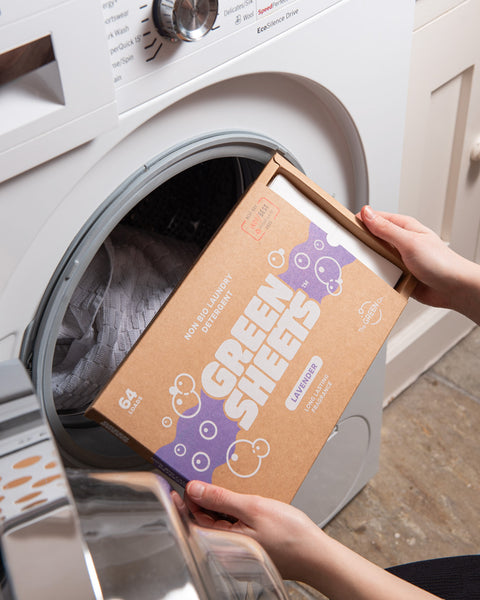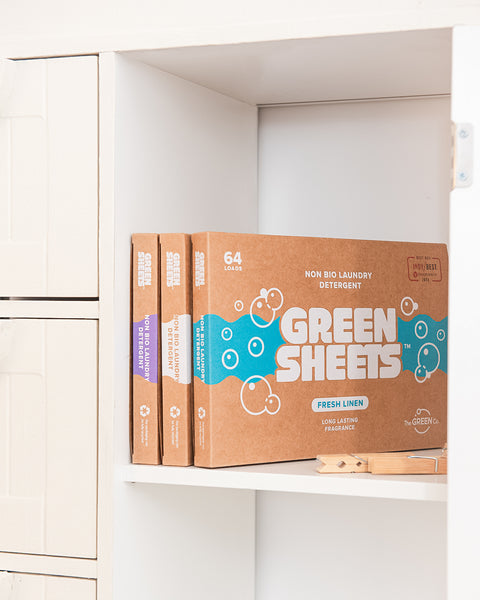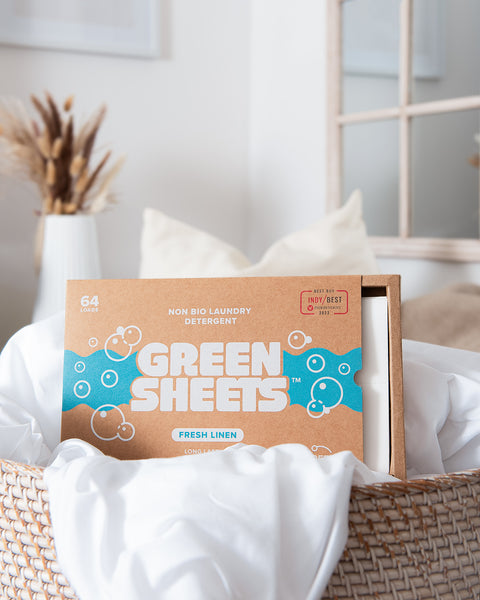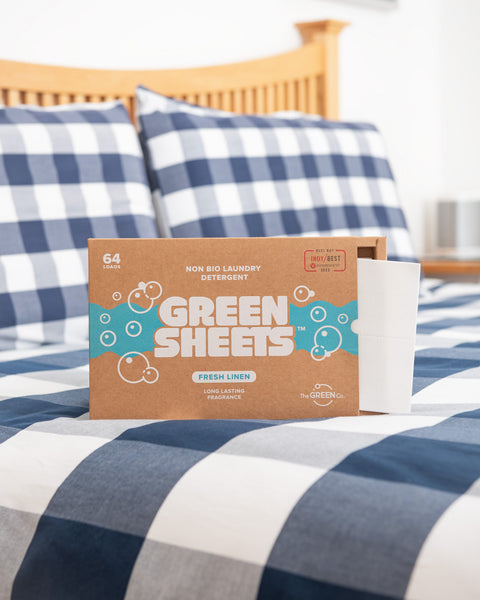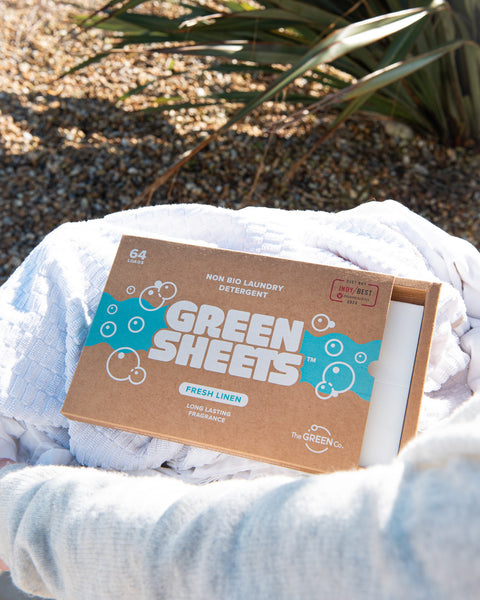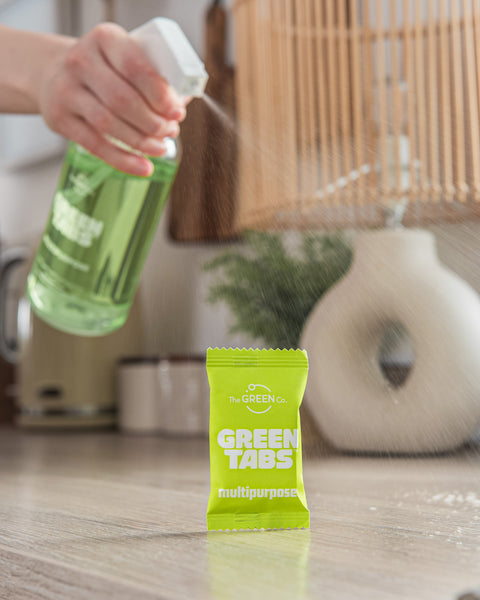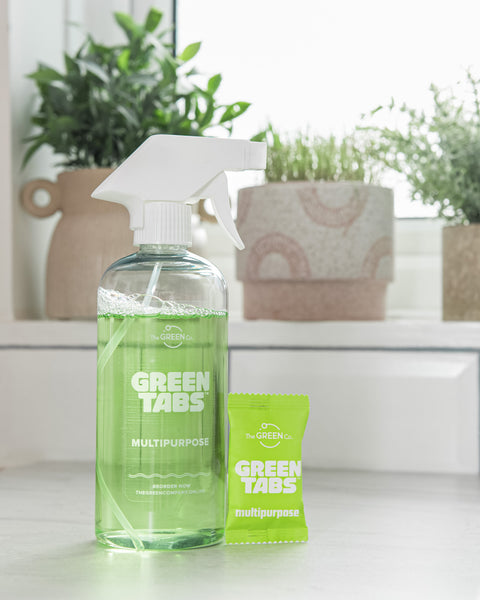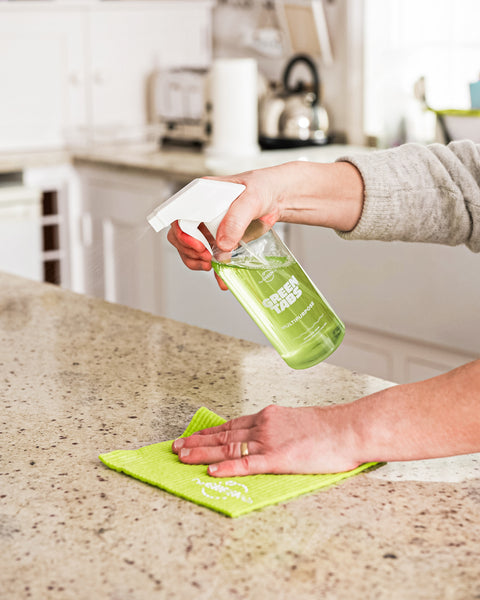Stain Removal Guide | Remove Over 200 Stains
Stains happen to the best of us. Whether it's food or drink, makeup or personal care, every stain has a story and we’re here to help you end each one with a happy, stain-free finish!
Use our stain removal guide below to get your clothes, furniture and belongings stain free and looking as good as new!
How to Remove Beverage Stains
Blot with a clean, dry cloth to absorb excess liquid. Rinse the stain from the back with cold water. If needed, dissolve a small piece of a GreenSheet in water, apply it to the stain, and gently rub it in. Let it sit for 5–10 minutes, then rinse again and wash as usual.

Blot the stain gently with a clean cloth to absorb as much juice as possible. Rinse the area with cold water to dilute the juice. Dissolve a GreenSheet in water, mix it with white vinegar (1:1 ratio) and apply it to the stain, and gently rub it in. Let it sit for about 10-15 minutes. Rinse thoroughly with cold water and wash as usual.

Blot the stain with a clean cloth to absorb excess coffee. Rinse the stain with cold water, then apply a mixture of a dissolved GreenSheet and white vinegar directly to it. Let it sit for about 5 minutes before rinsing and washing.

Blot the stain with a clean cloth to absorb excess juice. Rinse the area with cold water, then apply a mixture of a dissolved GreenSheet and white vinegar to the stain. Let it sit for about 10 minutes before rinsing and washing.

Blot the stain gently with a clean cloth to absorb as much juice as possible. Rinse the stained area with cold water. For tougher stains, apply a solution of one part dish soap, one part white vinegar, and two parts water. Dab the solution onto the stain and let it sit for about 15 minutes before rinsing with cold water. Wash the item as usual afterward.

Scrape off any excess chocolate. Rinse the fabric under cold water from the back of the stain. Apply a mixture of dish soap and water, gently rubbing the stain before rinsing again. If needed, treat with a stain remover before washing.

Blot the stain with a clean cloth to absorb excess wine. Sprinkle salt on the stain to absorb moisture, then rinse with cold water. If the stain remains, apply a stain remover or a mix of dish soap and hydrogen peroxide. Then, wash the fabric as usual.

Blot the stain with a clean cloth to absorb as much tea as possible. Rinse the fabric under cold water. Next, apply a mixture of a dissolved GreenSheet and white vinegar to the stain. Let it sit for 5-10 minutes before rinsing and washing.

Blot the stain with a clean cloth to absorb excess wine. Rinse with cold water, then treat with a mixture of dish soap and hydrogen peroxide. Let it sit for about 30 minutes before rinsing and washing.

Blot the area with a clean, dry cloth to absorb excess moisture. For fabrics, dab with a mixture of dish soap and water, then rinse with cold water. For wooden surfaces, mix equal parts vinegar and olive oil. This mixture can help restore shine and remove stains.

Blot up any excess milk, then rinse the area with cold water. Apply a mixture of liquid dish soap and white vinegar to the stain. Let it sit for about 10 minutes, then rinse and wash.

How to Remove Food Stains From Clothes
Blot the excess grease with a paper towel. Sprinkle baking soda or cornstarch on the stain to absorb the grease. Let it sit for 15-30 minutes, then brush off the powder. Treat the area with a dish soap solution before laundering.

Scrape off any excess food gently, then soak the stain in cold water. Dissolve a small piece of a GreenSheet in water and apply the solution directly to the stain. Let it sit for 10–15 minutes. Wash in warm water. Repeat if necessary for stubborn stains.

Blot the stain with a clean cloth to absorb any excess formula. Rinse with cold water, then apply a dissolved GreenSheet directly to the stain. Let it sit for about 10 minutes before rinsing and washing as usual.

Blot the stain with a clean cloth to absorb excess vinegar. Rinse the area with cold water from the back of the fabric to push the stain out. If needed, apply a mixture of dish soap and water or a stain remover, then wash as usual.

Scrape off excess sauce gently with a spoon. Rinse the stained area under cold water. Apply a stain remover or a mixture of a dissolved GreenSheet and vinegar onto the stain. Let it sit for 10 to 15 minutes, then wash in warm water.

Blot the stain with cold water immediately to absorb excess juice. Apply a mixture of vinegar and water (1:1 ratio) to the stain, letting it sit for about 10 minutes. Rinse thoroughly with cold water before laundering as usual.
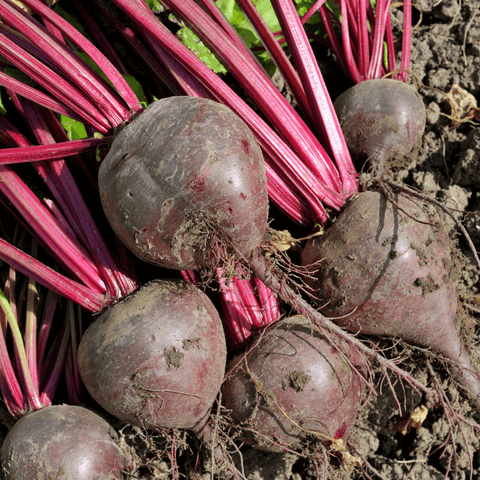
Gently blot the stain with a clean cloth to absorb excess juice. Rinse the area with cold water, then apply a mixture of a dissolved GreenSheet and lemon juice to the stain. Let it sit for about 15 minutes, rinse again, and wash as usual.

Blot the stain gently with a clean cloth to absorb excess juice. Rinse the area with cold water. Apply a mixture of dish soap and white vinegar to the stain and let it sit for 15 minutes. Rinse thoroughly and wash as usual.

Blot the stain with a paper towel to remove excess butter. Sprinkle cornstarch or talcum powder on the stain to absorb grease and let it sit for 15 minutes. Brush off the powder and treat the area with dish soap or a stain remover before washing.

Blot the stain with cold water to remove excess juice. Apply a stain remover or a mixture of dish soap and hydrogen peroxide directly to the stain. Let it sit for about 15 minutes before rinsing and washing as normal.

Scrape off any excess chocolate with a dull knife. Rinse the stained area with cold water. Then, apply a stain remover or a mix of a dissolved GreenSheet and water. Gently blot the stain until it lifts, then wash as usual.

Scrape off any excess caramel gently. Rinse the stain with cold water to loosen the residue. Apply a mixture of warm water and dish soap, working it into the stain with your fingers or a soft brush. Rinse with cold water and wash as normal.
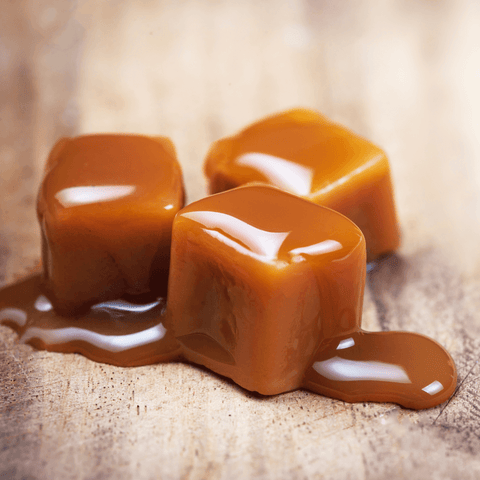
Blot the stain with a clean cloth to remove excess coconut milk. Rinse the area with cold water, then apply a mixture of dish soap and water. Gently rub the area and rinse thoroughly before laundering.

Blot the stain to remove any excess oil. Apply dish soap or a dissolved GreenSheet directly to the stain, gently rubbing it in. Let it sit for about 5-10 minutes, then rinse with warm water. Wash as usual.

Blot the stain with a clean cloth to absorb any excess cream. Apply dish soap or a dissolved GreenSheet directly to the stain, gently rubbing it in. Let it sit for about 10 minutes, then rinse with warm water and wash as usual.

Blot the stain with a clean cloth to remove excess curry. Rinse with cold water, then apply a stain remover or a mix of a dissolved GreenSheet and white vinegar. Let it sit for at least 15 minutes before rinsing and washing.

Gently scrape off any excess egg with a dull knife. Rinse the area with cold water to dilute the stain, then apply a mixture of a dissolved GreenSheet and cold water. Blot gently until the stain lifts, then rinse and wash.

Start by blotting the stain with a cloth to absorb excess syrup. Rinse the fabric under cold water to help lift the syrup. Apply a mixture of a dissolved GreenSheet and water to the area and gently scrub. Wash as usual, and check for any remaining stains before drying.
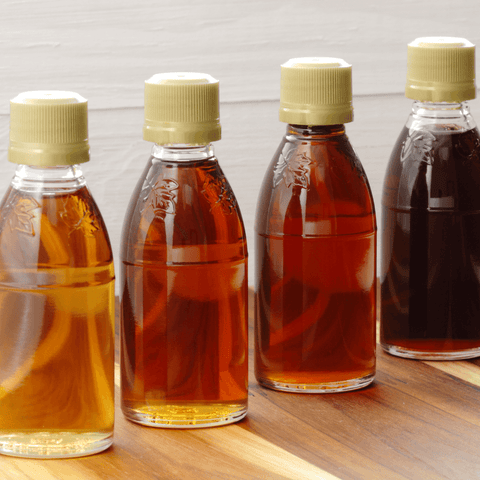
Blot the stain with a clean cloth to absorb excess gravy. Rinse the area with cold water, then apply a mix of a dissolved GreenSheet and white vinegar. Let it sit for about 10 minutes before rinsing and washing as usual.

Scrape off any excess honey, then rinse the area with cold water. Apply a mixture of liquid dish soap and warm water to the stain. Let it sit for about 10 minutes before rinsing and washing.

Blot the stain to absorb excess sauce. Rinse the area with cold water, then apply a mixture of a dissolved GreenSheet and white vinegar to the stain. Let it sit for about 10 minutes before rinsing and washing.

Scrape off any excess ice cream. Rinse the stain with cold water, then apply a mix of a dissolved GreenSheet and white vinegar. Let it sit for about 10 minutes before rinsing and washing.

Blot the stain to remove excess jam. Rinse with cold water, then apply a dissolved GreenSheet directly to the stain. Let it sit for about 10 minutes before rinsing and washing.

Blot the stain to absorb excess ketchup. Rinse with cold water, then apply a mixture of liquid dish soap and white vinegar directly to the stain. Let it sit for about 10 minutes before rinsing and washing.

Rinse the stained area with cold water to dilute the lemon juice. Apply a mixture of a dissolved GreenSheet and white vinegar directly to the stain. Let it sit for about 10 minutes before rinsing and washing.

Scrape off any excess mayonnaise with a spoon or knife. Blot the stain with a clean cloth to absorb as much grease as possible. Sprinkle baking soda or cornstarch on the stain to absorb the oil. Let it sit for about 15 minutes, then brush off the powder. Finally, treat the area with a stain remover before washing the item as usual.

Scrape off any excess mustard with a spoon or knife. Rinse the stained area under cold water to remove as much of the mustard as possible. Apply a mixture of dish soap and white vinegar to the stain, gently rubbing it in with your fingers. Let it sit for about 10 minutes, then rinse thoroughly with cold water. If the stain persists, repeat the process or treat it with a stain remover before washing the item as usual.

Blot the stain to absorb excess oil. Sprinkle baking soda or cornstarch on the stain to absorb oil and let it sit for about 15 minutes. Brush off the powder and apply liquid dish soap directly to the stain. Rub gently, rinse with warm water, and wash.

Blot the stain to remove any excess onion. Rinse the area with cold water, then apply a mixture of a dissolved GreenSheet and vinegar. Let it sit for about 10 minutes before rinsing and washing.
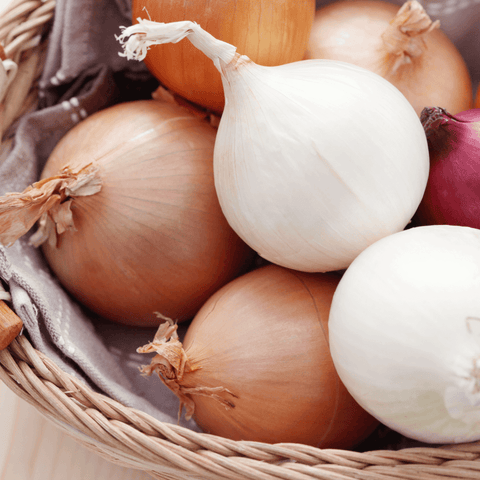
Scrape off excess peanut butter with a spoon. Apply dish soap directly to the stain and gently rub it in. Rinse with warm water and wash as usual.

Blot the stain with a clean cloth to absorb excess juice. Rinse the area with cold water. Next, apply a mixture of a dissolved GreenSheet and white vinegar to the stain. Let it sit for about 10 minutes before rinsing and washing.
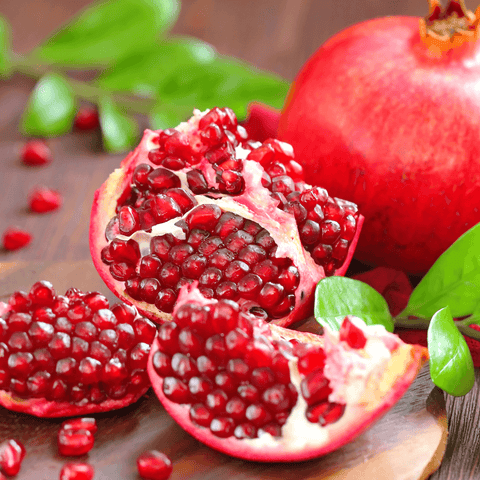
Scrape off any excess pumpkin flesh. Rinse the area with cold water and apply liquid dish soap directly to the stain. Let it sit for about 10 minutes before rinsing and washing.

Blot up any excess pudding. Rinse the area with cold water, then apply a mixture of liquid dish soap and white vinegar. Let it sit for about 10 minutes before rinsing and washing.

Blot the stain with a clean cloth to absorb excess juice. Rinse the fabric under cold water, then apply a mixture of a dissolved GreenSheet and white vinegar directly to the stain. Let it sit for about 10 minutes before rinsing again and laundering as usual.
Blot the stain gently with a clean cloth to absorb as much salsa as possible. Rinse the area with cold water. Then, apply a mixture of a dissolved GreenSheet and white vinegar to the stain. Let it sit for 10 to 15 minutes before rinsing and washing to remove any lingering residue.

Blot the stain with a clean cloth to absorb excess soy sauce. Rinse with cold water, then apply a mixture of a dissolved GreenSheet and white vinegar. Let it sit for about 10 minutes before rinsing and washing.

Blot the stain to absorb excess juice. Rinse the area with cold water. Then, treat it with a mixture of a dissolved GreenSheet and white vinegar. Let it sit for about 10 minutes before rinsing and washing.
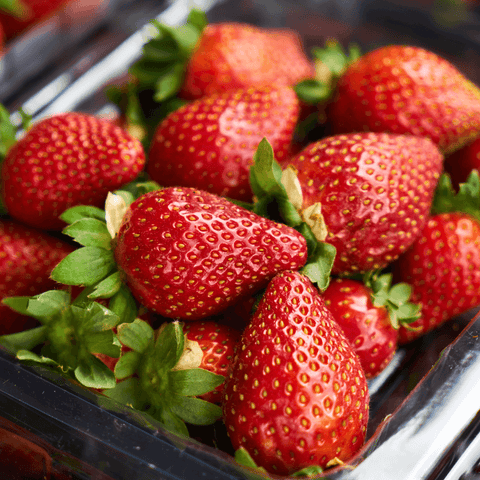
Mix one part white vinegar with two parts water. Dab this solution onto the stain, then blot with a clean cloth. Rinse with cold water and wash.
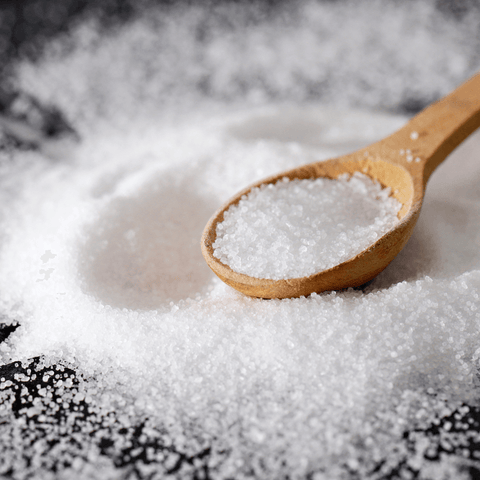
Gently scrape off any excess tomato. Rinse the stain under cold water. Then, apply a mixture of a dissolved GreenSheet and white vinegar to the area. Let it sit for 10-15 minutes before rinsing and washing.

Rinse with cold water, then apply a mixture of a dissolved GreenSheet and white vinegar. Let it sit for about 15 minutes before rinsing thoroughly and washing as usual.

Rinse the stained area with cold water. If any odor remains, apply a mixture of dish soap and water to neutralize it. Rinse and wash as usual.

Gently scrape off any excess yogurt with a spoon. Rinse the fabric under cold water. Then, apply a mix of a dissolved GreenSheet and white vinegar to the stain. Let it sit for 10-15 minutes before rinsing and washing as usual.

How to Treat Stains From Bodily Fluids
Carefully scrape off excess droppings with a spoon, being careful not to spread the stain. Rinse the stained area with cold water to dilute the residue. Apply a mixture of a dissolved GreenSheet and white vinegar to the stain. Let it sit for 15 minutes, then wash in cold water.

Wear gloves and scrape off any excess material. Rinse the stained area with cold water, then apply a mixture of a dissolved GreenSheet and white vinegar directly to it. Let it sit for about 10-15 minutes, then wash with hot water.
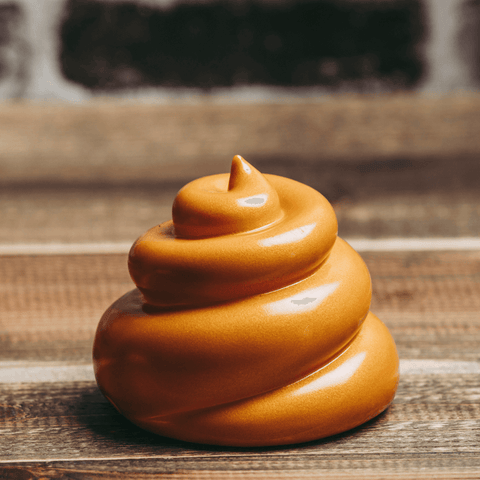
Blot any excess with a clean cloth. For urine, mix equal parts white vinegar and water, apply it to the stain, and let it sit for about 10 minutes. Rinse and launder. For feces or vomit, scrape off excess, rinse with cold water, and wash.

Mix equal parts of baking soda, water, and white vinegar to form a paste. Apply this paste to the stain and let it sit for about 30 minutes before rinsing and washing.

Blot the stain with a clean cloth to absorb as much liquid as possible. Mix equal parts of white vinegar and water, and apply it to the stain. Let it sit for 5-10 minutes before rinsing and washing.

Scrape off any solid material and blot the stain with a cloth. Rinse the area with cold water. Then, apply a mixture of a dissolved GreenSheet and white vinegar to treat the stain. Allow it to sit for 15-20 minutes before rinsing and wasshing.

Rinse the stained area with cold water to remove excess blood. Apply a mixture of cold water and a dissolved GreenSheet to the stain, dabbing gently. For tough stains, apply hydrogen peroxide or a protein-specific stain remover before washing.

How to Treat Stains from Personal Care Items
Dampen the stain with cold water, then apply a mixture of baking soda and water to form a paste. Gently rub it into the stain and let it sit for 15–20 minutes. Rinse thoroughly with cold water. If the stain remains, apply a pre-wash stain remover before washing as usual.

Sprinkle cornstarch or baking soda on the stain. This will help absorb the oil. Let it sit for at least 15 minutes. Brush off the powder, then apply liquid dish soap to the stain, gently working it in. Rinse with warm water and wash as usual, repeating if necessary.

Scrape off any excess chapstick carefully. Apply a small amount of dish soap to the stain and gently work it in. Let it sit for about 5 minutes, then rinse with warm water. If needed, treat with a stain remover before washing.
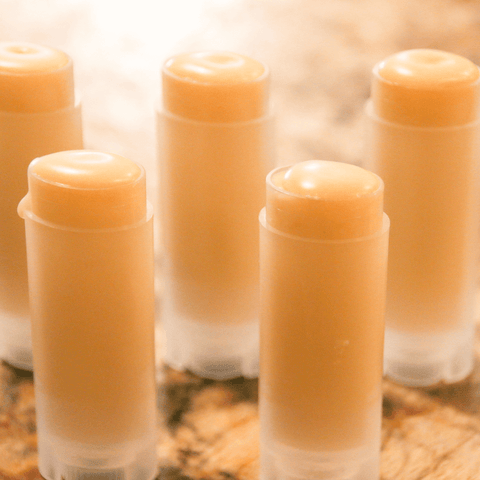
Blot the excess cream gently with a paper towel. Apply a small amount of dish soap directly to the stain and let it sit for 15 minutes. Rinse with cold water, then wash as usual to remove any remaining residue.

Blot the stain with a paper towel to absorb any excess oil. Sprinkle baking soda or cornstarch on the stain to absorb the grease and let it sit for 15 minutes. Brush off the powder and treat the area with a stain remover or a mixture of dish soap and warm water. Rinse thoroughly and wash as usual.

Blot the stain with a paper towel to absorb excess dye. Mix a solution of dish soap and hydrogen peroxide (1:1 ratio) and apply it directly to the stain. Let it sit for about 15 minutes before rinsing and washing.

Blot the stain with a clean cloth to absorb excess perfume. Rinse the area with cold water, then apply a mixture of liquid dish soap and white vinegar. Let it sit for about 10 minutes before rinsing and washing.

Blot the stain with a clean cloth to absorb excess sunscreen. Apply a mixture of dish soap and white vinegar directly to the stain. Let it sit for about 10 minutes before rinsing with cold water and washing.

Blot the excess oil with a clean cloth. Sprinkle baking soda or cornstarch on the stain to absorb the oil, letting it sit for 15-30 minutes. Brush off the powder, then treat the stain with a mixture of dish soap and warm water before washing.
Scrape off any excess toothpaste and rinse the area with cold water. Apply a mixture of dish soap and white vinegar to the stain, letting it sit for about 10 minutes. Rinse and wash as usual.

Scrape off any excess Vaseline with a dull knife. Sprinkle baking soda on the stain to absorb grease, let it sit for about 10 minutes, then brush it off. Follow up with a stain remover or a dissolved GreenSheet before washing.

How to Remove Makeup Stains From Clothes
Blot the stain with a clean cloth to absorb excess product. Apply a small amount of makeup remover or rubbing alcohol to a cotton ball and gently dab the stain. Rinse with cold water and wash as needed.

Gently scrape off any excess foundation with a spoon or a dull knife. Blot the area with a makeup remover or a mixture of dish soap and water. Rinse with cold water, then wash as usual.

Gently scrape off excess lipstick with a dull knife. Apply a small amount of rubbing alcohol or a stain remover to the stain and let it sit for about 5-10 minutes. Blot with a clean cloth, then rinse and wash as usual.

Blot the stain gently with a clean cloth to absorb excess mascara. Apply a few drops of rubbing alcohol to a cotton ball and dab the stain. Rinse with cold water and wash as usual.

Place a clean cloth under the stained fabric. Dab the stain with a cotton ball soaked in nail polish remover (acetone-free is best for most fabrics). Blot until the stain lifts, then rinse and wash as usual.

How to Remove Stains from Household Items
Place a paper towel under the stained area to absorb excess ink. Use rubbing alcohol or hand sanitiser on a cotton ball. Dab the stain gently, starting from the outside and moving inward. Rinse with cold water and wash as usual. Repeat if necessary.

Scrape off any excess wax carefully. Place a paper towel over the stain and use a warm iron to melt the wax, allowing it to be absorbed by the towel. Repeat until the stain is removed, then wash the fabric as usual.

Allow the wax to harden, then gently scrape off the excess with a dull knife. Place a paper towel or brown paper bag over the remaining wax and use a warm iron to melt it. The wax will transfer to the paper. Clean any remaining residue with a stain remover or a dissolved GreenSheet solution before washing.

Brush off any excess chalk gently. Mix equal parts water and vinegar, then apply to the stain with a clean cloth. Blot until the stain lifts, then rinse with cold water. Wash as needed.

Blot the stain with a clean cloth to absorb any excess softener. Mix a solution of equal parts white vinegar and water, and apply it to the stain. Let it sit for about 5-10 minutes, then rinse with cold water and wash as usual. To avoid spillage mishaps why not try our eco conditioner sheets?

Allow the glue to dry completely, then gently scrape off excess with a dull knife. Apply rubbing alcohol or a commercial adhesive remover to the stain, letting it sit for a few minutes. Blot and rinse with cold water before washing.

Freeze the gum with ice cubes in a plastic bag for about 10-15 minutes to harden it. Once solid, gently scrape off the gum with a dull knife. If residue persists, treat it with rubbing alcohol or a stain remover before washing.

Blot the stain with a paper towel to absorb excess iodine. Mix a solution of cold water and a few drops of dish soap, and apply it to the stain. Let it sit for 15 minutes, then rinse thoroughly before washing.
Dampen the stained area and gently rub it with a soft brush to loosen the residue. Rinse the fabric with warm water to wash away the detergent. If the stain persists, apply a mixture of vinegar and water, then rinse thoroughly.

Gently rub the mark with a clean eraser. For stubborn marks, apply a small amount of dish soap to a damp cloth and blot the area, then rinse and wash as usual.
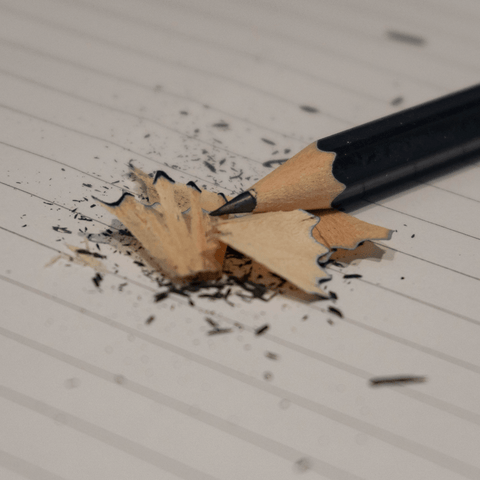
Place a clean cloth under the stained fabric. Dab the stain with rubbing alcohol or hand sanitizer using a cotton ball, working from the outside in. Rinse the area with cold water and wash as usual.

For water-based paint, blot the stain with a damp cloth and apply dish soap. Rinse with cold water. For oil-based paint, use paint thinner or rubbing alcohol. Dab the stain, then rinse and wash.
Gently scrape off any excess polish with a dull knife. Apply a small amount of rubbing alcohol to a clean cloth and blot the stain until it lifts. Rinse the area with cold water and wash as usual.

Gently scrape off any excess sap with a dull knife. Apply rubbing alcohol to a cotton ball or cloth and blot the stain until it lifts. Rinse with cold water and wash as needed.

How to Remove Miscellaneous Stains
Start by shaking or gently brushing off as much ash as possible without rubbing it into the fabric. Dab the area with a damp cloth to lift remaining particles. If needed, dissolve a small piece of a GreenSheet in water, blot gently with the solution, then rinse with cold water and wash as usual.
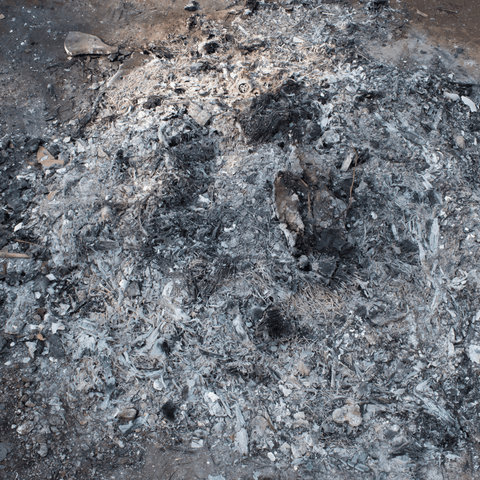
Brush off any excess charcoal gently. Rinse the area with cold water to dilute the stain. Apply a mixture of a dissolved GreenSheet and warm water, gently blotting the stain. Rinse thoroughly and repeat if necessary before washing.

Allow the dirt to dry, then brush off any excess with a soft brush. Rinse the area with cold water, then apply a dissolved GreenSheet directly to the stain. Let it sit for about 5-10 minutes before washing as usual.

Air out the fabric outside to dissipate the fumes. Sprinkle baking soda on the stain to absorb oil and odour. After a few hours, brush off the baking soda, then wash the item using hot water and a GreenSheet.

Blot the stain to remove excess grass. Rinse the area with cold water, then apply a stain remover or a mixture of a dissolved GreenSheet and white vinegar. Let it sit for about 10-15 minutes before rinsing and washing as usual.

Blot the stain to remove excess grease. Sprinkle baking soda or cornstarch on the stain to absorb the oil and let it sit for about 15 minutes. Brush off the powder and apply liquid dish soap directly to the stain. Rub gently and rinse with warm water before washing.

Mix equal parts white vinegar and water, and apply it directly to the stain. Let it sit for about 30 minutes before rinsing with cold water. Wash the item with hot water to help remove any lingering mildew odor.
Allow the mud to dry completely, then gently scrape off any excess. Rinse the area with cold water, and apply a dissolved GreenSheet directly to the stain. Let it sit for about 10 minutes before rinsing and washing.

Brush off any excess mold from the fabric outside to prevent spreading spores. Mix one part white vinegar with one part water and apply to the stain. Let it sit for 30 minutes before washing the item as usual.
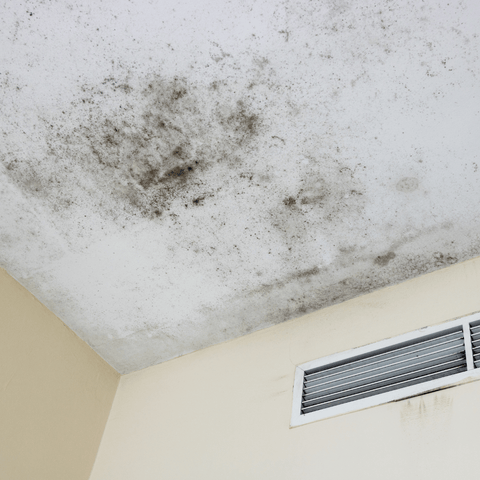
Shake or brush off any excess pollen before rinsing the area with cold water. Apply a mixture of a dissolved GreenSheet and white vinegar to the stain. Let it sit for about 10 minutes before rinsing and washing.
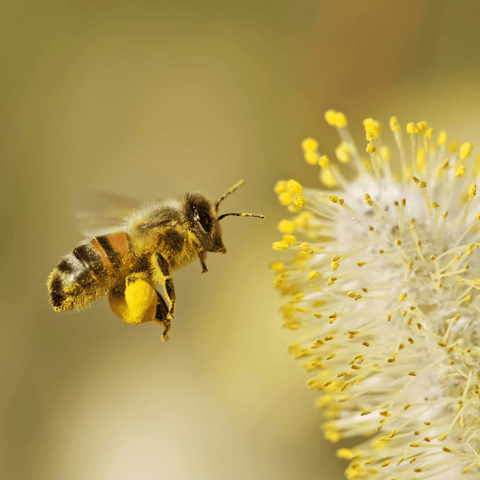
Apply a rust remover specifically designed for fabrics, or mix lemon juice and salt. Put this mixture on the stain and let it sit for about 30 minutes. Then, rinse it with cold water and wash as usual.

Removing Stains From (Almost) Any Fabric
First, shake or vacuum off any loose dirt. For stains, mix a solution of a dissolved GreenSheet and water. Using a cloth or sponge, gently dab the solution onto the stained area without soaking the burlap. Rinse with a damp cloth to remove soap residue. Allow it to air dry away from direct sunlight to prevent fading. For tough stains, consider using a specialised burlap cleaner.
For light stains, gently blot with a cloth dampened in cool water and a dissolved GreenSheet. Avoid rubbing to protect the weave. For tougher stains, use a dry-cleaning solvent or gently dab with a vinegar solution. Avoid soaking or wringing, and let it air dry flat.
Use a GreenSheet and cool water to soak the stained area, as hot water can weaken the fibers. Gently blot the stain and rinse with cold water. Air dry flat to keep its shape and texture, avoiding direct sunlight to prevent fading.
Place a soft cloth underneath the fabric to protect the beads. Blot the stain with a damp cloth soaked in a a dissolved GreenSheet. Avoid rubbing to prevent loosening or dislodging beads. If the stain persists, dab lightly with a mixture of warm water and a gentle, clear dish soap. Rinse by gently dabbing with plain water and allow to air dry flat to avoid bead displacement.
Begin by vacuuming the area to remove any loose dirt. For stains, mix equal parts white vinegar and water, and use a soft cloth to blot the solution onto the stain. Avoid soaking the cord fabric. After blotting, rinse the area with a clean damp cloth and let it air dry. For tougher stains, consider using a gentle upholstery cleaner.
Start by gently brushing off any loose dirt with a soft brush. For wet stains, blot the area with a clean, dry cloth to absorb excess liquid without rubbing. Mix equal parts of water and a dissolved GreenSheet to create a cleaning solution. Dampen a clean cloth with the solution and gently dab the stain. Avoid soaking the fabric. Rinse the cloth with plain water and use it to remove any soap residue. Allow the fabric to air dry away from direct heat. For tough stains, use a commercial upholstery cleaner designed for chenille, testing it in a hidden area first.
Blot the stain with a clean, dry cloth to absorb excess liquid. Mix a solution of cold water and a dissolved GreenSheet. Dampen a soft cloth with the solution. Gently dab the stain. Avoid scrubbing hard. Rinse the area with cold water and blot dry with a clean towel. If necessary, use a specialised stain remover and follow the manufacturer’s instructions.
Gently blot the stain with a clean cloth to absorb any excess liquid. Mix a dissolved GreenSheet with cool water. Use a soft cloth to apply the solution to the stain. Dab gently, then rinse the area with cool water, and lay the chiffon flat on a towel to air dry. Avoid wringing or twisting the fabric.
For fresh stains, blot with a paper towel to absorb excess. Pre-treat with a stain remover or mix water and a GreenSheet, applying with a soft brush. Scrub gently, taking care not to damage the fibers. Rinse thoroughly with cool water and repeat if necessary before air drying.
Blot the stain with a clean cloth to absorb any excess liquid. For general stains, create a mixture of cold water and a few drops of dish soap or a dissolved GreenSheet. Apply this solution to the stain and let it sit for 5-10 minutes. Gently scrub with a soft brush, then rinse thoroughly with cold water. Wash the cotton item as usual, following the care instructions.
Blot the stain with a paper towel to absorb any excess liquid. Prepare a mixture of warm water and a dissolved GreenSheet. Use a soft brush or cloth to gently scrub the stained area with the mixture. Rinse with warm water and blot dry. If the stain persists, treat with a fabric-safe stain remover before washing.
Blot the stain with a clean cloth to absorb any excess liquid. For food stains, rinse the area with cold water. For ink or grease stains, apply rubbing alcohol or dish soap to the stain. Let it sit for 5 minutes. Gently scrub the area with a soft brush or cloth, then rinse with cold water. Wash the denim item as usual according to the care label.
Hand wash or spot-clean with a dissolved GreenSheet. Avoid scrubbing over the embroidery and air dry flat.
For liquid stains, blot immediately with a clean, dry cloth to absorb as much as possible. Mix a dissolved GreenSheet with cool water. Gently dab the stain with a damp cloth, and avoid rubbing too hard. Rinse by blotting with a damp cloth, then air dry. Avoid heat to prevent shrinking.
Blot the stain gently to absorb any excess liquid. For grease stains, sprinkle baking soda or cornstarch and let it sit for a few minutes. Brush off and apply a mixture of a dissolved GreenSheet and cool water, dabbing the stain gently. Rinse thoroughly and air dry. Avoid high heat when washing or drying fleece to prevent pilling.
Blot the stain with a clean, dry cloth to absorb any liquid. For oily stains, sprinkle cornstarch on the area and let it sit for 15 minutes to absorb the oil. Brush off the powder and wipe the area with a damp cloth. If needed, use a specialised faux suede cleaner for more stubborn stains.
For most stains, pre-treat with a dissolved GreenSheet, then wash in cool water. For stubborn stains, apply a solution of water and white vinegar and rinse thoroughly. Gingham is prone to fading, so avoid hot water and strong bleaches, and let it air dry.
Soak the fabric in a basin of lukewarm water mixed with a a GreenSheet. Avoid using harsh bleach, which can damage the fibers. For stubborn stains, add a small amount of white vinegar to help lift the stain. After soaking, rinse thoroughly with cool water and hang to dry in indirect sunlight to avoid shrinkage.
Gently brush off loose dirt. For liquid stains, blot with a clean cloth to absorb moisture. Mix lukewarm water with a dissolved GreenSheet. Use a soft cloth or sponge to dab the stained area, working from the outside in. Rinse the cloth with clean water and blot to remove detergent residue. Let the fabric air dry. For tough stains, test a fabric-safe stain remover on a hidden area before use.
Dab the stain with a clean cloth to absorb excess liquid. Use a dissolved GreenSheet mixed with water and dab the stain with a cloth. Rinse with cool water without stretching the fabric. Reshape it and allow it to air dry. For tough stains, a small amount of diluted vinegar can be used before rinsing.
Blot the stain gently to absorb excess liquid. Apply a a dissolved GreenSheet with cool water, using a soft cloth to dab the area. Rinse thoroughly with cool water, then reshape and lay flat to air dry. Avoid wringing knit fabric to maintain its shape and elasticity.
Gently blot the stain with a clean cloth to absorb excess liquid. Mix a few drops of a dissolved GreenSheet with lukewarm water. Test this solution on a small, hidden area first. If safe, apply the solution with a soft cloth, dabbing the stained area carefully. Rinse with cool water using a damp cloth to remove any soap residue. Lay the lace flat on a towel to air dry, avoiding any direct sunlight or heat sources. If needed, lightly iron on a low setting with a protective cloth in between.
Wipe with a damp cloth for surface stains. For oils, use a gentle dish soap diluted in water and wipe the stain with a cloth. Rinse thoroughly and pat dry with a towel. Avoid scrubbing or using harsh cleaners, as latex is sensitive and can break down with strong chemicals.
Dab the stain with a clean cloth to absorb any excess liquid. Mix a dissolved GreenSheet with warm water and apply it gently to the stain, using a soft cloth. Rinse well and let the fabric air dry. For tough stains, use a gentle stain remover. Avoid bleach to prevent weakening the fabric.
Blot the stain immediately with a clean cloth. Apply a dissolved GreenSheet and water solution with a cloth and dab gently. Rinse by blotting with a damp cloth, and lay flat to air dry. Avoid using bleach as it can weaken the fibers.
Blot the stain gently to remove any excess. Mix a a dissolved GreenSheet with water. Use a cloth to dab the stain, being careful not to stretch the fabric. Rinse the area by gently pressing with a damp cloth and allow it to air dry. Avoid vigorous scrubbing to maintain the structure of the mesh.
Blot the stain with a paper towel to lift as much of it as possible. For oil-based stains, sprinkle baking soda to absorb grease, then brush it off after 15 minutes. Use a GreenSheet and water mixture on a cloth to gently dab the stain, and rinse with a damp cloth. Allow it to air dry.
Rinse with cool water to remove any salt or dirt. For oil stains, apply a small amount of dish soap diluted with water, gently rubbing the stain with a cloth. Rinse thoroughly with cool water and air dry, avoiding direct sunlight. Do not wring neoprene, as it can damage the material’s elasticity.
Blot the stain with a clean cloth to absorb excess liquid. For oily stains, sprinkle cornstarch or baking soda on the area to absorb the oil and let it sit for 15 minutes. Brush off the powder and treat the stain with a mixture of warm water and a few drops of a dissolved GreenSheet. Rinse thoroughly and wash as usual.
Blot the stain with a soft cloth to absorb excess moisture. Prepare a solution of cold water and a dissolved GreenSheet. Lightly dab the stained area with the solution using a cotton ball or soft cloth. Rinse gently with cold water and air dry away from direct sunlight. Avoid rubbing, as it may damage the delicate fibers.
Use a GreenSheet in cool water. Blot the stain and rinse well. For oil-based stains, pre-treat with dish soap and wash as usual. Avoid high heat, which can cause polyester to retain stains.
Begin by gently scraping off any solid residue from the stain. Rinse the area under cool running water to dilute the stain. Apply a stain remover or a mix of a dissolved GreenSheet and water directly to the stain. Let it sit for about 10-15 minutes before washing. Wash the fabric following the care instructions, using the warmest water that is safe for it. Check the stain before drying; repeat the process if necessary, as heat can set the stain.
Gently scrape off any solid residue, then rinse the area under cool running water. Apply a pre-treatment stain remover or a mix of a dissolved GreenSheet and water to the stain. Let it sit for 10–15 minutes. Wash the fabric according to the care instructions using the warmest safe water. Check the stain before drying; repeat the process if necessary, as heat can set the stain.
Blot the stain gently with a clean, dry cloth to absorb excess liquid. Mix cool water with a few drops of a dissolved GreenSheet or silk-specific cleaner. Using a soft cloth, dab the stained area with the solution, being careful not to rub too hard. Rinse with cool water and allow the silk to air dry away from direct sunlight. For stubborn stains, seek professional cleaning.
Blot with a mild soap solution using a soft, damp cloth. Avoid rubbing as this can damage the sheen and cause snags. Rinse by gently blotting with a clean cloth dampened with plain water. Lay flat to dry, avoiding direct sunlight to protect its color.
Blot any excess stain with a clean cloth. Mix a solution of cold water and a dissolved GreenSheet. Use a soft cloth to apply the solution to the stain. Gently dab to lift the stain without harming the fabric's elasticity. Rinse thoroughly with cold water and air dry.
Gently blot any fresh stains with a clean, dry cloth. For dry stains, use a suede brush or a soft eraser to lift the stain. Avoid water, as it can damage the texture. If needed, dab the stain gently with a cloth soaked in white vinegar. After it dries, use a suede brush to restore the texture.
Pre-treat stains with a a dissolved GreenSheet or stain remover specifically for synthetic fabrics. Allow it to soak briefly, then gently rub the stained area with your fingers to lift the stain. Avoid using bleach as it can damage the elasticity. Rinse with cool water and air dry to maintain the fabric’s stretch.
Hand wash with a dissolved GreenSheet and cool water. Air dry flat to maintain shape and avoid stretching.
Blot the stain with a clean cloth to absorb any excess liquid. Mix a solution of a dissolved GreenSheet and warm water, and apply it to the stain with a soft cloth, rubbing gently. Rinse with cold water and let it air dry. If the stain persists, consider using a stain remover before washing as usual.
Blot any excess liquid or food with a clean cloth. Mix a solution of cold water and a dissolved GreenSheet. Dampen a cloth with the solution. Gently dab the stain, starting from the outside and working inward. This helps prevent the stain from spreading. Rinse with cold water and blot dry. If necessary, repeat the process or use a specialised fabric stain remover.
Blot any excess stain with a paper towel. Rinse the stained area with cold water. Prepare a mixture of warm water and a dissolved GreenSheet. Soak the stained area for 15-30 minutes, then gently scrub with a soft brush or cloth. Rinse thoroughly with warm water and let air dry. For tough stains, pre-treat with a stain remover before washing.
Use a damp cloth with a dissolved GreenSheet to blot the stain, avoiding any scrubbing motion. For water-based stains, lightly dab with a clean, dry cloth and a few drops of white vinegar. Allow it to air dry, preferably laid flat.
Begin by brushing the fabric to remove loose dirt. For stains, mix a solution of a dissolved GreenSheet and cool water. Use a clean cloth to dab the stain, being cautious not to soak the fabric. Rinse with a damp cloth to remove any soap, then allow it to air dry. Avoid wringing tweed to prevent it from losing shape.
Blot any excess liquid off with a clean cloth. Mix a small amount of a dissolved GreenSheet with water and gently dab the stain with a cloth. Rinse with a damp cloth and let the velvet air dry. Once dry, use a soft brush to lift the pile back up. Avoid heavy pressure, as it can damage the texture.
Blot the stain with a clean cloth to absorb excess moisture. Create a solution of cold water and a dissolved GreenSheet. Dab the solution onto the stain with a soft cloth, being careful not to saturate the fabric. Rinse with cold water and air dry flat to avoid stretching the fabric.
Wipe with a damp cloth to lift any surface debris. For stubborn stains, use a dissolved GreenSheet and water mixture, and dab the area gently. For ink or dye stains, rubbing alcohol on a cotton ball can be effective. Rinse with a damp cloth and dry with a towel to avoid residue.
Dab the stain with a clean cloth to lift excess liquid. Use a mixture of a dissolved GreenSheet and water on a cloth to gently blot the stain. Avoid rubbing, as it can crush the pile. Rinse with a damp cloth and allow it to air dry. Once dry, use a soft brush to lift the pile and restore the texture.
Blot the stain with a clean cloth to absorb any excess liquid. For most stains, create a mixture of lukewarm water and a few drops of a dissolved GreenSheet. Dab the solution onto the stain with a soft cloth, using a gentle blotting motion. Rinse with cool water and avoid wringing the fabric. Allow it to air dry flat to maintain its shape.
Wipe away excess with a dry cloth. For oil stains, sprinkle cornstarch or baking soda on the area and let it sit for 15 minutes before brushing off. Use a mixture of mild detergent and warm water to gently clean the stained area. Rinse with a damp cloth and air dry. Avoid harsh chemicals that can compromise the waterproofing layer.
Natural & Faux Textures
Blot the stain gently with a clean cloth. Don’t press too hard, as this can mat the fur. For small stains, dampen a cloth with a mix of a dissolved GreenSheet and cold water. Then, lightly blot the area. Let the fur air dry naturally, avoiding heat sources. For tough or large stains, it’s best to consult a professional fur cleaner.
Shake the faux fur to remove loose dirt. Mix a solution of a dissolved GreenSheet and cool water, and use a soft cloth or sponge to gently blot the stain. Avoid saturating the faux fur, as too much water can damage its texture. Rinse with a damp cloth and allow it to air dry away from heat. Brush the fur lightly once dry to restore its fluffiness.
Blot any excess liquid or oil immediately. Create a mixture of equal parts white vinegar and water, and apply it with a soft cloth to the stain, dabbing gently. Wipe with a clean, damp cloth and dry immediately with a towel. Condition the leather after cleaning to maintain its suppleness. For stubborn stains, consult a professional cleaner.
Wipe away any excess with a soft cloth. Mix a small amount of mild dish soap with warm water and dampen a cloth with the solution. Gently clean the stained area, avoiding soaking the faux leather. Rinse with a damp cloth and dry with a soft towel. For tough stains, try a specialised faux leather cleaner.
How to Remove Stains From (Almost) Any Material
Dust with a cellulose dish cloth, then wipe with a mixture of warm water and a few drops of dish soap. For tough spots, use an acrylic-safe cleaner. Avoid abrasive sponges and harsh chemicals, which can scratch and cloud the surface.
For general cleaning, use warm soapy water with a sponge. To remove oxidation, apply a paste of baking soda and water, scrub lightly, rinse, and dry. For a polished finish, use a cloth with a little vinegar or lemon juice.
Wipe spills immediately. For stains, dampen a cloth with a mild detergent solution and blot gently. For oil stains, sprinkle cornstarch or baking soda to absorb the oil, let sit for 15 minutes, then wipe off. Avoid excessive water and dry with a soft cloth to maintain its natural luster.
Mix equal parts vinegar and salt to make a paste, apply with a cloth, and rinse with warm water. Dry and buff to restore its shine. Commercial brass cleaners can be effective, but avoid harsh abrasives to prevent scratching.
Wipe with a soft cloth and water. For tougher dirt, use a mild soap. Avoid harsh chemicals or abrasives that could damage the resin coating.
Clean with a mixture of warm water and mild detergent. For stains, scrub with a baking soda paste or use a small amount of hydrogen peroxide for deep stains. Avoid using acidic cleaners that can etch the surface.
For fresh spills, blot with a cloth and sprinkle baking soda to absorb moisture. For deeper stains, scrub with a stiff brush and a mixture of water and dish soap. For tougher oil stains, use a GreenTabs Degreaser or baking soda paste and scrub, then rinse with water and let it air dry.
Use a mixture of salt and lemon juice to gently rub the surface, removing tarnish. Rinse with water, then dry and polish with a clean cloth. Avoid abrasive scrubbing to maintain its sheen.
Wipe spills immediately with a damp cloth. For stubborn stains, use a mixture of water and a mild soap. Avoid soaking the cork, as it can warp. Dry thoroughly to prevent mold or mildew growth.
Hand wash in warm, soapy water and dry immediately with a lint-free cloth to prevent spots. Avoid harsh scrubbing, which can scratch the surface.
Use a soft cloth with mild dish soap and water. For stubborn stains, apply a baking soda paste and gently scrub. Rinse with water and dry. Avoid harsh abrasives and hot items, as Corian can scratch and melt under high heat.
Clean with mild soap and water. For stubborn spots, use a baking soda paste. Avoid abrasive sponges, as they can scratch or chip the enamel.
Wipe with warm, soapy water and a soft cloth. For tougher stains, use a baking soda paste, then rinse with water. Avoid harsh abrasives, which can damage the laminate surface and dull its shine.
Use a non-abrasive cleaner, scrubbing with a soft sponge. For tough stains, apply a paste of baking soda and water. Rinse thoroughly with water and dry to prevent mildew.
Wipe with a mixture of water and mild detergent. For rust, use a paste of baking soda and water. Rinse thoroughly and dry to prevent further rusting.
Spray with a GreenTabs Glass Cleaner or a solution of vinegar and water. Wipe in a circular motion with a microfiber cloth for streak-free results. For tough spots, use a bit of baking soda paste and rinse with clean water.
Clean up spills immediately to prevent absorption. For stains, make a paste of baking soda and water or hydrogen peroxide for organic stains. Apply the paste, let it sit for several hours, and wipe with a damp cloth. Avoid acidic cleaners as they can dull the surface.
Dust regularly with a cellulose dish cloth. For smudges, use a damp cloth with mild soap and dry immediately. Avoid excess water, which can damage the lacquer finish.
Wipe with a mixture of warm water and mild dish soap. For stubborn stains, use a mixture of water and vinegar or rubbing alcohol, then rinse and dry. Avoid abrasive sponges, as they can scratch the surface.
Clean with warm soapy water and a soft cloth. For stains, apply a baking soda paste and scrub gently. Avoid harsh chemicals which can damage the surface.
For water spots or tarnish, wipe with a mixture of equal parts vinegar and water. For rust stains, apply baking soda and scrub gently with a soft brush. Rinse with water and dry immediately to avoid watermarks.
Wipe gently with a damp cloth. For adhesive residues, use a mild soap solution. Avoid excessive pressure to prevent scratching or tearing.
Wipe down with a soft sponge and mild dish soap. For stubborn stains, use a mixture of baking soda and water, scrub lightly, and rinse well. Avoid abrasive cleaners that can scratch the surface.
Dust regularly and wipe with a damp cloth. Avoid excess water and use coasters on surfaces to prevent staining.
Blot the stain with a cloth and avoid rubbing to prevent spreading. Use a pH-neutral stone cleaner or a paste of baking soda and water. Let it sit for a few hours, then wipe with a damp cloth. For oil-based stains, apply cornstarch to absorb the oil. Leave it on for several hours, then brush off and wipe clean.
Soak in a mixture of warm water and baking soda or vinegar. For tougher stains, scrub gently with a sponge and dish soap. Rinse thoroughly and let air dry.
Sweep regularly to prevent dust buildup. For stains, clean with a wood-safe cleaner. Avoid excess water and abrasive cleaners.
Wash gently with mild detergent and warm water. For stains, use a baking soda paste and scrub lightly. Avoid abrasives to keep the surface smooth and polished.
Wipe down with soapy water and a cloth. For deeper stains, use a solution of vinegar and water. Rinse thoroughly and dry. Avoid harsh chemicals, as they may degrade the material over time.
Wipe gently with a cellulose dish cloth and a mixture of water and mild soap. Avoid ammonia-based cleaners, as they can cause cloudiness and cracking. For polishing, use a soft, damp cloth and avoid abrasives.
Dust with a soft cloth. For deeper cleaning, wipe with a damp cloth and mild soap. Avoid excess water, as it can warp or weaken the material.
Wipe with a damp cloth and mild detergent. For tougher stains, scrub gently with a baking soda paste. Rinse thoroughly with water and air dry. Avoid harsh chemicals, which can dry out or damage rubber.
Wipe down with a soft cloth dampened in a mixture of water and mild dish soap. For stubborn spots, use white vinegar on a cloth, followed by a rinse with water. Buff dry with a microfiber cloth to avoid streaks and maintain shine.
Wash with mild soap and warm water. For tough stains, make a baking soda paste and scrub gently. Rinse thoroughly and air dry. Avoid using the dishwasher, as it can damage the finish.
Use GreenTabs Glass Cleaner and a cellulose dish cloth for regular cleaning. Avoid abrasive sponges that could scratch the surface.
For regular cleaning, use a mixture of warm water and mild detergent. For grout stains, scrub with a mixture of baking soda and water or a specialised grout cleaner. Rinse thoroughly to prevent soap buildup.
Wipe with a damp cloth and mild soap. For stains, spot-clean gently without scrubbing, as Tyvek can tear. Avoid bleach and harsh chemicals.
Wipe with a soft sponge and warm, soapy water. For stuck-on food, soak in warm soapy water before wiping. Avoid metal utensils or abrasive sponges that can scratch the coating.
For surface stains, scrub with warm water and mild dish soap, using a soft brush. For persistent stains, use a baking soda paste or hydrogen peroxide on organic stains. Rinse well with water, and dry thoroughly to prevent mildew.
For water rings, rub the area gently with a mixture of equal parts vinegar and olive oil. For tougher stains, apply a small amount of baking soda mixed with water to form a paste. Gently rub the paste onto the stain with a soft cloth, then wipe away with a damp cloth. Always dry the area thoroughly afterward to prevent further damage.




